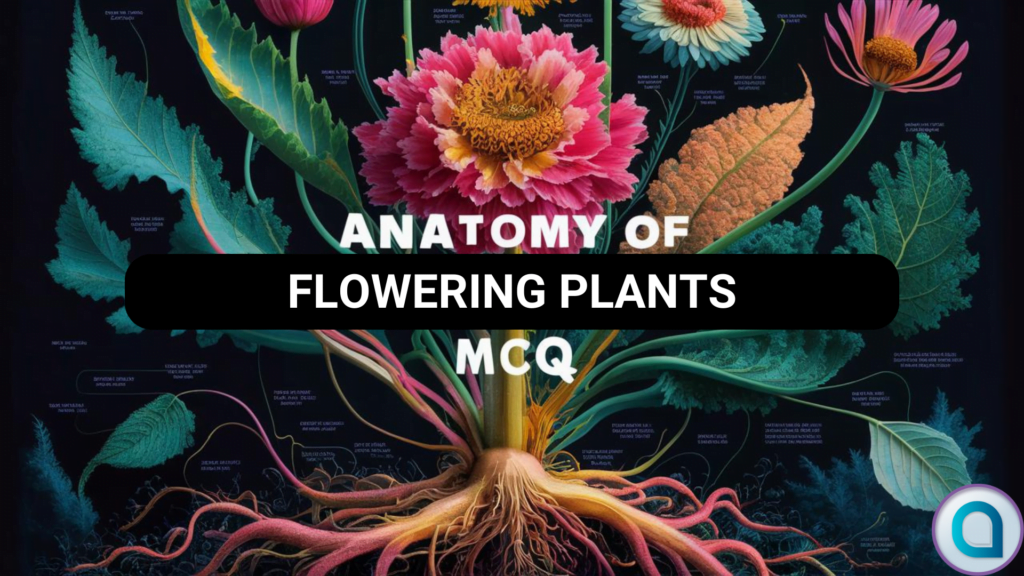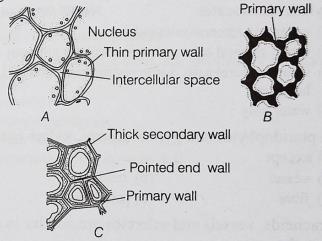
Anatomy of Flowering Plants MCQ for NEET
The anatomy of flowering plants involves studying the internal structure and organization of plant tissues. Flowering plants, also known as angiosperms, have complex tissues like xylem and phloem that are important for water and nutrient transport. The xylem carries water and minerals from the roots to the rest of the plant, while the phloem distributes the food produced during photosynthesis. Understanding these tissues and their functions is essential for grasping how plants sustain themselves and grow.
In addition to transport tissues, the anatomy of flowering plants includes studying various tissues like parenchyma, collenchyma and sclerenchyma, each serving different roles, such as storage, support and protection. The arrangement of these tissues in roots, stems and leaves differs among plant species, leading to variations in structure and function. For NEET, knowing these details helps students understand plant physiology, which is a critical component of the exam.
| NEET 2025 Exam Important Links | |
|---|---|
| NEET 2025 Updated Syllabus | How to read NCERT Biology for NEET |
| Biology Preparation | NEET Eligibility Criteria 2025 |
| NEET Preparation tips for 2025 | NEET Result 2024 |
Anatomy of Flowering Plants MCQ for NEET
The “Anatomy of Flowering Plants” is important in the NEET syllabus because it provides a deep understanding of the internal structure of plants, which is essential for studying plant physiology and development. Topics such as the structure of roots, stems and leaves, along with tissue organization, help students grasp how plants function and survive in different environments.
This topic also forms the basis for understanding more complex plant processes, like nutrient transport, photosynthesis and growth regulation. Mastery of this section can help students answer questions related to plant biology with confidence, contributing significantly to their overall NEET score.
Anatomy of Flowering Plants MCQ for NEET
Complete the above sentence by replacing A and B with correct option.
During the formation of leaves and elongation of stem, some cells are 'left behind' from shoot apical meristem. These constitute the axillary buds. These buds are present in the axil of leaves and are capable of forming a branch or a flower.

It is found in grasses and regenerates parts damaged by the grazing herbivores.

Enhance your preparation with Arexiq’s Mock Test Series where we provide solutions to various MCQs like we provide in this post “Anatomy of Flowering Plants NEET MCQ”. Our expert teachers explain the concepts thoroughly, making it easy for you to understand. We offer many types of questions ensuring a clear grasp of concepts.
FAQs
Q1: What is the significance of studying the anatomy of flowering plants for NEET?
Answer. Studying the anatomy of flowering plants is crucial for NEET as it helps students understand the internal structure and function of plant organs. This knowledge is important for answering questions related to plant physiology and development.
Q2: What are the main topics covered under the anatomy of flowering plants in the NEET syllabus?
Answer. The main topics include the structure and function of tissues, types of tissues (meristematic and permanent), the anatomy of roots, stems, and leaves, as well as secondary growth in plants.
Q3: How many questions related to the anatomy of flowering plants can be expected in NEET?
Answer. Typically, NEET includes 1-2 questions related to the anatomy of flowering plants, often focusing on tissue types, their functions, and the structure of various plant organs.
Q4: What are the most important tissues to focus on in the anatomy of flowering plants for NEET?
Answer. The most important tissues include xylem and phloem (vascular tissues), epidermis, cortex, pericycle, and pith, as these are frequently covered in NEET questions.
Q5: Are diagrams important for understanding the anatomy of flowering plants?
Answer. Yes, diagrams are very important as they help visualize the internal structure of plant organs and are often used in NEET questions to test your understanding of plant anatomy.



Thank you for this excellent post! I found it incredibly insightful and informative. Your thorough explanation of the topic really helped me understand it better. I appreciate the effort you put into writing this and look forward to reading more of your content in the future.